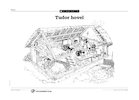Tudor house makeover!
Add to My Folder
Teach children about Tudor homes by giving a common cruck-cottage a TV makeover!
These activities are designed to help children appreciate the differences between the homes of the well-to-do and the ordinary in Tudor times. Again, although a tongue-in-cheek approach is taken, based on television programmes, the aim of the activities is to go deeper than simply interior design, giving children an understanding of the vast differences in lifestyle between the rich and poor in Tudor times. The following lessons are based on home improvement programmes.
Essential facts
- While Tudors could make glass, they could not make large panes, only small sections – hence the diamond-shaped pieces held together with lead. Glass was so expensive, and windows such a luxury, that when moving house people would take their windows with them. Poorer homes had thin horn or leather in the windows.
- Nobles’ houses, furniture and accessories were modelled on those of the king, with huge kitchens below stairs, stables and kennels outside, and tapestries and lavish tableware. Brick was the latest material, and chimneys the new fashion – previously houses simply had a hole in the roof.
- Rich nobles often had a town house in London and another home located in the country. They would employ a ‘riding household’ to transport their property in carts from one to the other when they wished to move for a season.
- Poorer people built cruck-cottages – cottages made of timber. Curved trees were chosen and split down the middle to make two crucks (like an inverted ‘v’). These formed the framework of the house. The gaps were filled with either hazel twigs and clay or chalk and plaster, depending on what was available locally.
- Tudor homes were often insanitary because of the lack of understanding of hygiene and disease. There might have been a cesspit outside, but the straw-covered floor could well be used as a toilet, with the straw being changed ‘when necessary’.
Member-only content
Scholastic Resource Bank: Primary - join today!
- Over 6,000 primary activities, lesson ideas and resources
- Perfect for anyone working with children from 5 to 11 years old
- Unlimited access from just £1.25 per month
Already a member? Sign in below.
Published 26 September 2007
Reviews
You need to be signed in to place a review.

